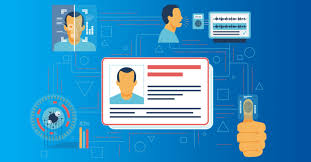In today’s increasingly digital society, identity verification has become an essential step to ensure security and prevent fraud. It involves verifying the legitimacy of the individual’s identity before granting access different systems or services. This article will provide a thorough overview of the essential information you need to know about identity verification.
What is Identity Verification?
identity verificaiton involves confirming an individual is who they claim to be. It is accomplished through a variety of methods, which include biometric information, documents or other information about a person. The objective is to ensure that the user of a service or system is authorized to access the system or service.
Methods of Identity Verification
Checking for documents: This traditional method involves checking government-issued documents like passports, driver’s licenses or ID cards. Customers may require images and physical copy of such documents. The verification procedure can be done manually or automated using Optical Character Recognition (OCR) technology.
Biometric Verification: This entails the use of unique biological traits to confirm identity. The most common biometric methods are the scanning of fingerprints, facial recognition voice recognition and iris scanning. The biometric data is usually considered to be more secure due to the fact that they are extremely difficult to replicate.
Knowledge-Based Verification: This method is based on what the user is familiar with, such as answers to security-related questions or personal data such as Social Security numbers or account numbers. While widely utilized, it may be less secure if the information is compromised.
Two-Factor authentication (2FA): This adds an additional layer of security because it requires two kinds of verification. Typically, this involves something the user knows (like a password) and something they have (such as a mobile device which has the verification code).
Why is Identity Verification Important?
Identity verification plays a critical role in safeguarding financial and personal information. It helps prevent identity loss, fraudulent transactions, and unauthorised access to sensitive data. By ensuring that individuals are correctly identified, organizations can mitigate risks and comply with regulations such as that of General Data Protection Regulation (GDPR) and the Know Your Customer (KYC) requirements.
Challenges and Considerations
Despite its importance, identity verification isn’t free of challenges. It can be cumbersome for users, particularly when a number of verification steps are required. Privacy concerns also are raised as more personal information is stored and collected. Ensuring that the data is secure and is used in a responsible manner is essential.
Future Trends
In the future, identity verification is moving toward more sophisticated technologies, such as blockchain to facilitate decentralized identity management and AI for more accurate biometric verification. These advancements aim to improve security, cut down on fraud, and streamline verification. verification process.
In the end, identity verification is a vital element of modern security procedures. By understanding the various methods and their significance, individuals and organizations can be more secure and navigate the digital world with more confidence.

